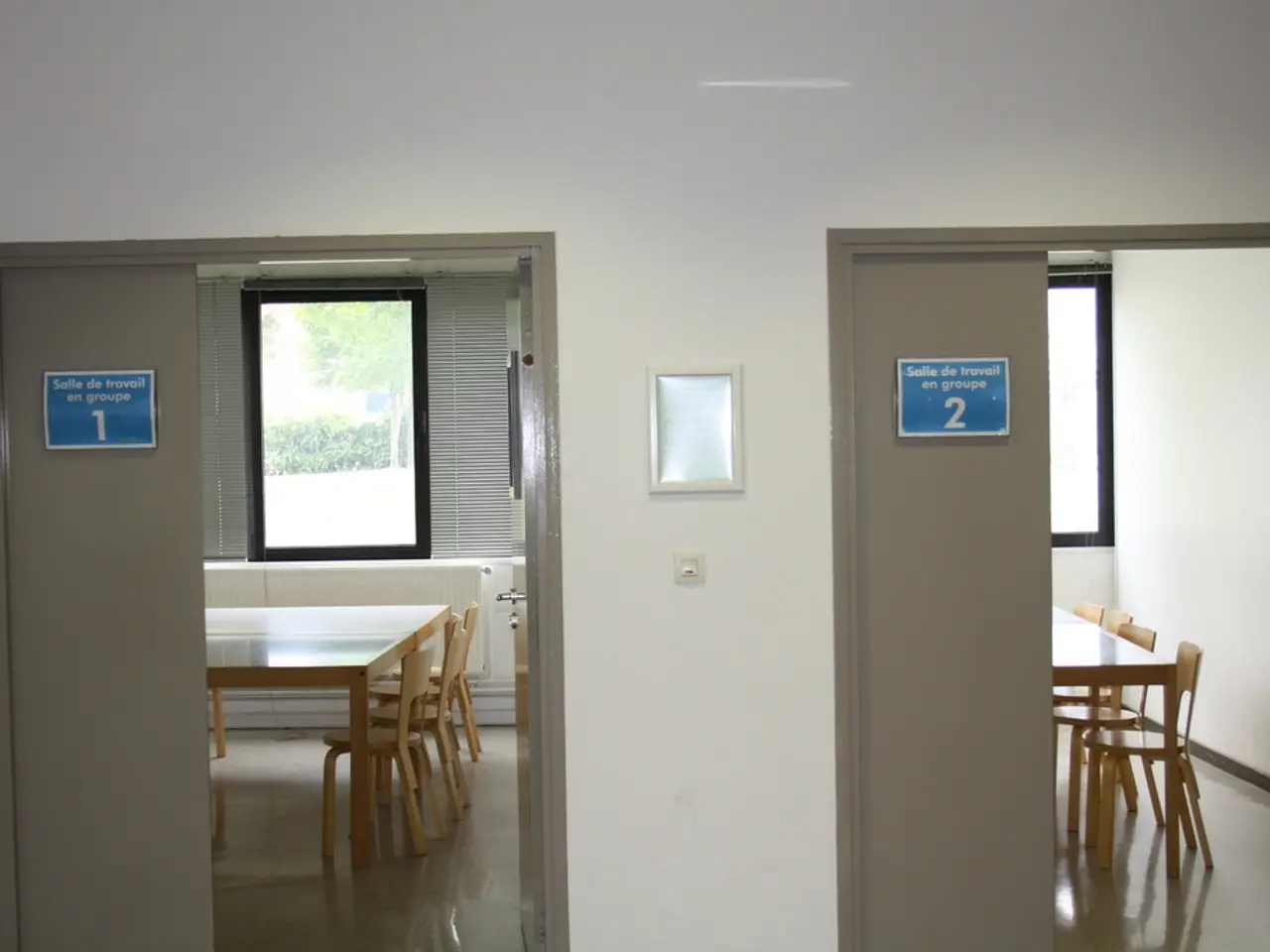Recent Developments in Solar Panel Technology and Energy Progressions Nationwide
### Revolutionary Advancements in Perovskite Solar Cell Technology: A Step Towards Energy Independence
In a significant leap forward for renewable energy, the introduction of advanced grid technology and artificial intelligence (AI) is enabling better energy output management. This technological advancement is coupled with a growing emphasis on strengthening investment in solar panel and system advancements for long-term energy independence and climate resilience.
Michael Thompson, an esteemed expert in the renewable energy sector with over 25 years of experience, recently discussed the latest trends in renewable energy and provided practical advice on energy conservation. His expertise spans various sustainable energy solutions, including solar, wind, hydroelectric, and energy efficiency practices.
One of the most promising developments in the solar energy sector is the progress made in perovskite solar cell (PSC) technology. In 2025, the latest advancements in PSC technology have made significant strides in terms of efficiency, stability, and scalability, highlighting their potential to surpass traditional solar technologies.
#### Key Advancements and Efficiency Milestones in 2025
Researchers at the National University of Singapore developed a perovskite–organic tandem solar cell, achieving a world-record certified power conversion efficiency (PCE) of 26.4% for a 1 cm² active area. This achievement was enabled by a novel narrow-bandgap organic absorber that improves near-infrared photon harvesting, a major limitation in thin-film tandem cells.
Breakthroughs in bifacial PSCs have resulted in impressive performance, with a PCE of 23.4%, a reduction in current loss to 1.67 mA/cm², and remarkable durability maintaining over 80% of initial output after more than 83 days under continuous light exposure.
The National Renewable Energy Laboratory (NREL) and CubicPV collaboration pushed perovskite minimodule efficiency up to 23.9%. The focus is on scaling up cell size and enhancing outdoor durability to meet commercial production standards, which is key to widespread market adoption.
LONGi reported a certified efficiency breakthrough for perovskite-silicon tandem cells reaching 33.9%, marking the first such certification near this level. Tandem designs combine wide-bandgap perovskites with silicon to reduce thermalization losses and exceed the Shockley-Queisser limit for single-junction solar cells.
#### Potential Efficiency Outlook for 2025
Perovskite-silicon tandems are expected to exceed 33% efficiency, potentially up to 34% and beyond with further optimization, making them highly competitive with or superior to current commercial silicon cells. Perovskite-organic tandems are commercially demonstrating around 26% efficiency, likely improving as materials and fabrication processes mature. Single-junction, bifacial, and minimodule forms of PSCs achieve efficiencies in the range of 23–24% with enhanced stability, addressing long-term operational concerns.
In summary, by 2025, perovskite solar cell technology is rapidly approaching commercial viability thanks to their high efficiency, improved operational stability, and versatile form factors. Tandem architectures, particularly perovskite-silicon and perovskite-organic hybrids, hold the promise to lead in efficiency benchmarks — potentially surpassing 33 to 34% in the near term. Meanwhile, innovations in bifacial PSCs and module scaling are closing the gap on durability, making PSCs very attractive for a diverse range of renewable energy applications.
Energy storage technologies like lithium-ion and flow batteries are expected to provide better reliability for solar energy. This solar power capacity is enough to power over 50 million homes nationwide. As of the first quarter of 2025, the U.S. residential solar segment has added about 1,106 MWdc, bringing cumulative domestic solar power capacity to around 239 GW.
In 2025, Japan announced a ¥227 billion (USD 1.5 billion) investment to develop ultra-thin, flexible perovskite cells. The Inflation Reduction Act (IRA) of 2022 extended the Investment Tax Credit (ITC) through 2032 for households and businesses. Monocrystalline solar panels have an efficiency of up to 20-24.8%. California led with more than 37 GW of installed solar photovoltaic (PV) capacity in 2023, providing about 30% of the state's electricity.
Solar shingles installation is a growing trend in home solar solutions. The US Energy Information Agency expects 30 GW of utility-scale solar to be added in both 2025 and 2026. To achieve a 100% carbon-free power grid by 2035, SEIA estimates that annual solar energy installations must be above 140 GW by 2030. The ITC allows homeowners and businesses to deduct 30% of the cost of solar installations from their federal taxes.
Bifacial solar panels, which take in light from both sides, are performing better than traditional panels. The author of the article, Michael Thompson, provides insights on solar panel and system advancements. These technological developments in solar panel and system design are the main drivers of the expansion of solar energy in the US.
- The environmental science community continues to emphasize the importance of ESG (Environmental, Social, and Governance) reporting in finance to encourage sustainable living and combat climate-change.
- The renewable energy industry is not limited to solar panels; advancements in wind energy and hydroelectric technologies are also crucial for energy independence.
- The integration of AI and grid technology in renewable energy systems is anticipated to revolutionize home-and-garden lifestyles, enabling efficient energy management.
- The increasing use of renewable energy is not just for businesses; it extends to general news and politics, as policy-and-legislation worldwide is emphasizing the need for a shift towards sustainable living.
- The NGO (Non-Governmental Organization) sector plays a pivotal role in promoting awareness and advocating for green policies to combat climate-change and promote renewable energy.
- In the realm of environmental-science, the progress in perovskite solar cell (PSC) technology is not only transforming the renewable energy sector but also redefining the landscape of technology and science.
- The focus on renewable energy is not just about energy production; it's also about energy conservation, a topic often discussed by experts like Michael Thompson in the realm of business and lifestyle.
- The development of flexible, ultrathin perovskite cells, as indicated by Japan’s ¥227 billion (USD 1.5 billion) investment, promises to further the potential of renewable energy in a diverse range of applications.
- The Inflation Reduction Act of 2022 not only invests in renewable energy but also supports sustainable living initiatives, such as the Investment Tax Credit (ITC) for homes and businesses.
- The increasing focus on renewable energy and sustainability doesn't only improve the environment but also has positive implications for the broader lifestyle and business sectors, contributing to a greener future.




